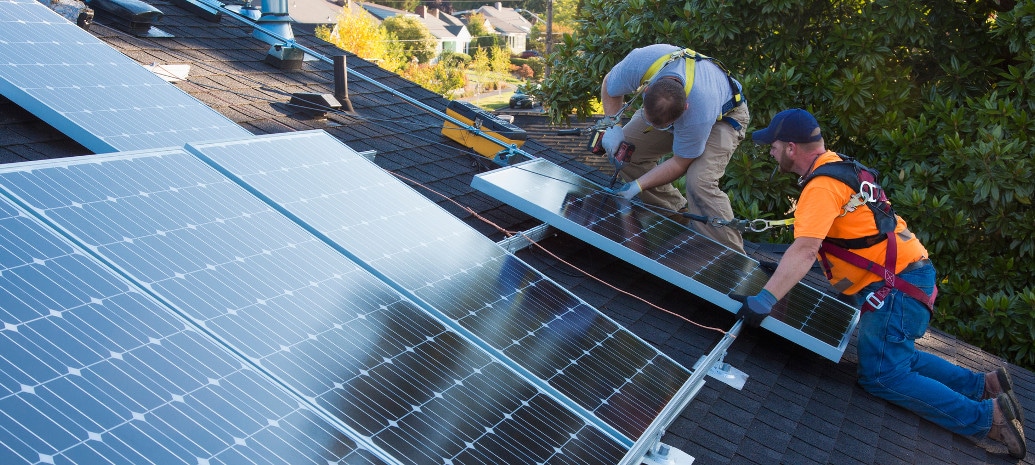While tariff and state and local policy issues have been muddying the waters of the U.S. solar markets, a way forward to reduce the installed cost of residential solar is possible by addressing non-material, or “soft” costs. A study by the U.S. Department of Energy’s (DOE) National Renewable Energy Laboratory (NREL) offers recommendations that can reduce the levelized cost of electricity of PV in the residential market from an estimated $0.151/kilowatt-hour (kWh) in 2017 down to $0.05/kWh by 2030.
The study notes the great progress of residential cost reduction from $0.52/kWh in 2010 to $0.151, and examines two types of residential markets – new construction and roof replacement. These two markets represent about 3.3 million residential units per year, with replacements usually being in the majority, depending on market conditions.
This represents an annual potential market of 30 gigawatts (GW) per year, which comes out to over 9 kW of capacity per unit. This surpasses the commonly thought of residential installation metric of 5 kW, but the capacity of installed residential PV systems has grown (up to a median 6.2 kW in 2016 according to a Lawrence Berkeley National Lab report), and the market of houses that may be all electric as well as larger in size can use larger systems. The present residential installation market has been around 2 GW per year. Eight annual GW-sized potential markets were identified in the study – Texas at 3.6 GW, California 3.2 GW, Florida 2.7 GW, New York 1.4 GW, Illinois 1.3 GW, Ohio at 1.1 GW, and Georgia and North Carolina at 1.0 GW each.
Based on a Q1 2017 benchmark of $2.66/watt installed, cost reduction opportunities were predicted for the two markets with two scenarios, an innovative “Visionary” scenario and a more business-as-usual “Less Aggressive” mode. For roof replacement, a visionary scenario could result in a $1.21/watt installed cost in 2030, a less aggressive approach $1.82. For new construction, a visionary goal in 2030 would be $1.10/watt, less aggressive would be $1.62.
The biggest opportunities in cost reduction were in supply chain, sales and marketing, overhead and labor. Supply chain improvements involve the material and functional integration of PV and roofing installers, and in new construction the further integration of homebuilders as well. Sales and marketing savings could come from efficiency in common platforms and streamlined transactions. Cost reductions in these two areas would carry over to lower labor and overhead costs.
A supply chain that employs an integrated, streamlined PV-roof system ready to install at the right time, whether for new construction or roof replacement, would be an example of a “visionary” step. Going piecemeal in product or process improvements would be considered “less aggressive”.
On the sales and marketing end, sharing leads would be considered less aggressive if each installer went its own way in the rest of the process, whereas sharing a common, automated platform with reduced number of contacts would be more visionary. The NREL study realizes that economy of scale is critical to maximize cost savings even among willing parties, particularly among businesses with two figures a year project volume. Also, some state PV markets have higher overall costs than others. PV installers, roofers and homebuilders looking to get a leg up on cost reduction can participate in partnerships like the DOE-sponsored Solar Market Pathways program.
This content is protected by copyright and may not be reused. If you want to cooperate with us and would like to reuse some of our content, please contact: editors@pv-magazine.com.








By submitting this form you agree to pv magazine using your data for the purposes of publishing your comment.
Your personal data will only be disclosed or otherwise transmitted to third parties for the purposes of spam filtering or if this is necessary for technical maintenance of the website. Any other transfer to third parties will not take place unless this is justified on the basis of applicable data protection regulations or if pv magazine is legally obliged to do so.
You may revoke this consent at any time with effect for the future, in which case your personal data will be deleted immediately. Otherwise, your data will be deleted if pv magazine has processed your request or the purpose of data storage is fulfilled.
Further information on data privacy can be found in our Data Protection Policy.